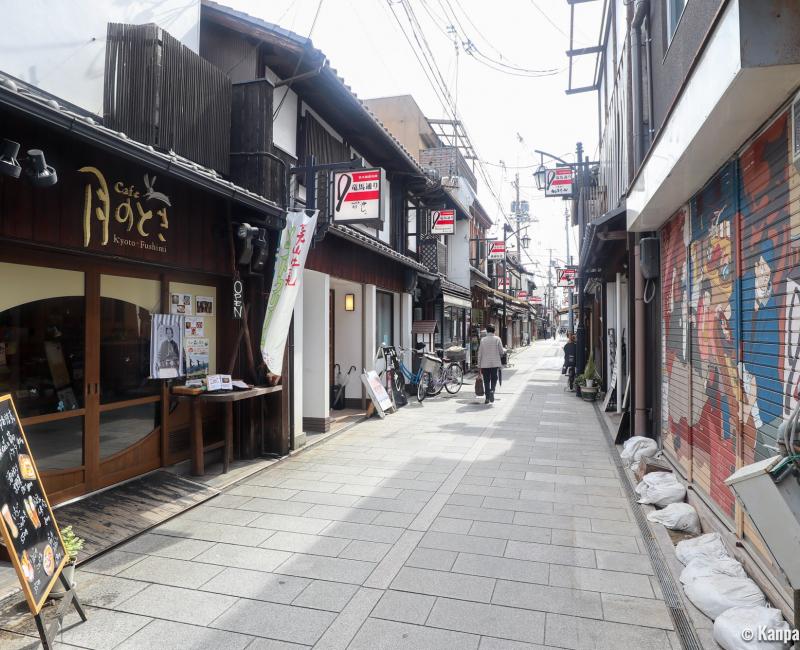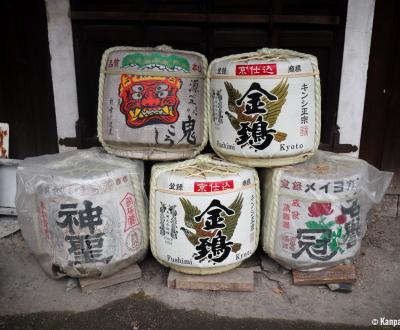Fushimi Sake
Kyoto’s Traditional Breweries District
Fushimi sake district is an ancient brewery town located between Fushimi-Momoyama and Chushojima stations, in the south of Kyoto. Major events that marked the end of feudal period in Japan and involved Sakamoto Ryoma (1836 - 1867), a popular historical character, took place in its streets perfumed by the aroma of fermented rice.
Fushimi became the main sake 🍶 breweries district of Kyoto at the beginning of the 16th century. Its location was decided considering the numerous water streams flowing along the streets, and especially a branch of Uji River providing "the essence of sake brewing," in other words a very good mineral water that enhances the flavors of the Japanese alcohol. The founder of Okura brewery, now called Gekkeikan Okura Sake, established in Fushimi in 1637, quickly followed by many other fellow brewers.
An ideal location for trade
At the end of the 17th century, this ward in the south of Kyoto was thus blessed with a remarkable economic development. The rivers crossing Fushimi were increasingly used as waterways with the development of trade between Kyoto and Osaka. The transport of goods was mainly by water at the time, and Uji River, that flows into Yodo river, made the district a hub for waterway transportation. Today, Fushimi Port Park is testimony of this past activity.
At the same period, the Sankin-kotai policy was implemented to force the daimyo lords to reside alternatively between the capital Edo and their domains. Thanks to its ideal location, Fushimi took the opportunity to diversify activities and answer to the important needs for accommodation of merchants, sailors, as well as feudal lords and their parties. Several inns then opened alongside the sake breweries, and the district became de facto a place where information quickly spread and where power plays were at stake.
During the second part of the 19th century, the history of Fushimi district is closely linked to Meiji Restoration. Many historical figures walked in these streets, and one of the most famous was probably conspirator samurai Sakamoto Ryoma, who worked for the collapse of Tokugawa shogunate (that indeed occurred after his death).

An edutainment course between sake and anti-feudal revolution
Fushimi is the district where sake amateurs and Japanese history lovers meet, as most of the places to visit are in a small area between Fushimi-Momoyama and Chushojima stations. Thus, associating both interests is easy and the discovery of the agitated past of this area is pleasant, as many traces remain.
Ryoma-dori shopping street, that connects Otesuji and Nayamachi shopping galleries to the breweries’ streets, is dedicated to the famous samurai. We recommend visiting the nearby authentic Teradaya Inn, which used to be the lodging for travelers from Satsuma region (now Kagoshima). The inn gave its name to the Teradaya incident, that occurred on 23 April 1862. A group of progressists from Satsuma, including Sakamoto Ryoma as one of their leaders, gathered at this inn to organize a coup d’état to overthrow the feudal regime. This attempt was a failure for the revolutionaries, but it is remembered as the first armed anti-shogun conspiracy in Japan. On a side note, in one of Teradaya inn’s rooms, a pillar still bears the impact of a bullet shot in 1866 in a failed assassination attempt against Ryoma.
Less than five minutes away, Gekkeikan Okura Sake Museum is a must-see to learn about history and making of sake in Kyoto. Inaugurated in 1982, the museum displays the set of equipment necessary to brew the alcoholic beverage with detailed explanations translated in English. During the visit, you will also hear the traditional song brewers sing during their work. At the end of the visit, the staff offers to taste three different sake.
Lastly, the small Choken-ji temple, whose grounds are dotted with sake barrels, ends on a pleasant note the discovery of the charming and authentic district of Fushimi, still preserved from Kyoto’s tourist crowds.

